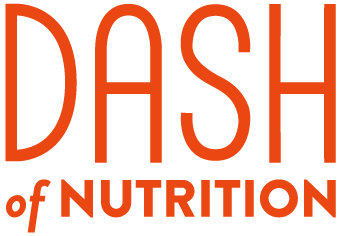How to Stay Hydrated in Hawaii’s Heat
Why Hydration Matters in Hawaii
Hydration is essential for overall health, but in Hawaii’s warm and sunny climate, it’s especially important to stay on top of your fluid intake. June 23 marks National Hydration Day, a timely reminder to check in on your hydration habits. Whether you're relaxing at the beach, hiking on the weekend, or going about your daily routine, the warm weather can increase your risk of dehydration. As a local dietitian, I get asked about hydration all the time, how much water to drink, what counts as fluids, and whether you have to stick to plain water. Let’s break down everything you need to know about staying hydrated in Hawaii.
How Much Water Do You Really Need?
A good rule of thumb is to drink about half your body weight in ounces of fluid per day. For example, if you weigh 150 pounds, aim for around 75 ounces. However, this is just a starting point. If you’re active, spend time in the sun, or sweat a lot (hello, humid beach days!), you’ll need even more. Runners and athletes may need to replace 14–27 ounces of fluid per hour of intense activity, especially if it lasts longer than an hour. Listening to your thirst is also important, your body is pretty good at signaling when it needs more fluids, so don’t ignore those dry-mouth moments!
What Counts Toward Your Daily Fluid Intake?
Staying hydrated doesn't mean you have to drink plain water all day. Many of the foods and beverages you already enjoy contribute to your fluid intake. This includes herbal teas, milk, coconut water, and even coffee in moderation. Yes, coffee! While it's a mild diuretic, studies have shown that moderate caffeine intake does not significantly increase dehydration for regular consumers. Brothy soups, smoothies, and even foods like watermelon, cucumbers, lettuce, oranges, and strawberries are high in water content and count toward your hydration goals. Just keep in mind that sugary drinks and alcoholic beverages can work against you if consumed too often, so it's best to enjoy them occasionally.
Do You Have to Just Drink Water? Healthy and Tasty Alternatives
Absolutely not! Plain water is great, but it’s not your only option for staying hydrated. Many people find it easier to stay on track by mixing up their drinks throughout the day. Try sparkling water with a splash of fresh lime, or infuse a big pitcher of water with local fruits like pineapple, mango, or passionfruit and a few mint leaves. Herbal iced teas, like hibiscus or lemongrass, are naturally caffeine-free and add a refreshing twist. Coconut water is a great local option that not only hydrates but also provides natural electrolytes. You can also make homemade electrolyte drinks with a pinch of sea salt, a splash of citrus juice, and a little honey or maple syrup. These flavorful options make hydration feel less like a chore and more like self-care.
Water Bottles That Make It Easier to Stay Hydrated
Carrying a water bottle with you is one of the easiest ways to ensure you’re drinking enough throughout the day. One favorite is the Owala bottle, which features both a spout and a straw, a handle for easy carrying, and a lid that prevents spills - perfect for busy days out and about. For those who need reminders to drink, smart water bottles like the HidrateSpark sync with your phone and send gentle nudges to sip throughout the day. The key is finding a bottle that works with your routine and makes hydration feel effortless.
Do You Need Electrolytes Every Day?
Electrolytes, like sodium, potassium, and magnesium, help regulate fluid balance, especially during intense activity or when you’re sweating heavily. But not everyone needs electrolyte supplements daily. They can be useful if you’re exercising for more than an hour, training in hot weather, or recovering from illness. With more options now available at stores like Foodland, Whole Foods, and Costco, it’s worth comparing a few:
LMNT and Liquid IV: Higher in sodium, better for endurance workouts.
HI Drate Electrolytes: Locally made powder also high in sodium, ideal for long distances!
Nuun: Balanced and lower in sugar, great for light activity.
Body Armor: Tasty but lower in sodium, so not ideal for long, sweaty workouts. This could be a better choice if you have high blood pressure. Choose one that fits your needs and taste preferences. Just be mindful of added sugars and your activity level when deciding if you need them daily.
Hydration Tips for Hawaii’s Active Lifestyle
Whether you're hiking Diamond Head or taking your keiki to the beach, hydration plays a major role in how you feel and perform. Start your day with a glass of water, our bodies lose fluids overnight, and rehydrating in the morning sets you up for success. Sip water regularly throughout the day instead of trying to “catch up” at night, which can be less effective and may interrupt sleep. Eating hydrating foods like fresh fruit and veggies can boost your water intake passively. If you're active or spending time in the sun, don’t forget to bring a water bottle and refill it often. Staying hydrated helps regulate body temperature, transport nutrients, and prevent fatigue or headaches.
Hydration is a Lifestyle, Not a One-Time Fix
Hydration isn’t just for hot days or workouts, it’s something we benefit from every single day. By drinking consistently, choosing fluids you enjoy, and investing in a good water bottle, staying hydrated in Hawaii can be book a consultation call!easy and even fun. If you’re not sure whether you’re drinking enough or want to learn more about optimizing hydration for your lifestyle, book a consultation call! We’re here to help you feel your best in our beautiful island home. Or follow us on Instagram for more nutrition and wellness insight!

